fall inside a hole
R-14 Crossing Point Rail (1978)
| <--R-13 Single/Double Point Rail | R-15 Double Track Point Rail --> |
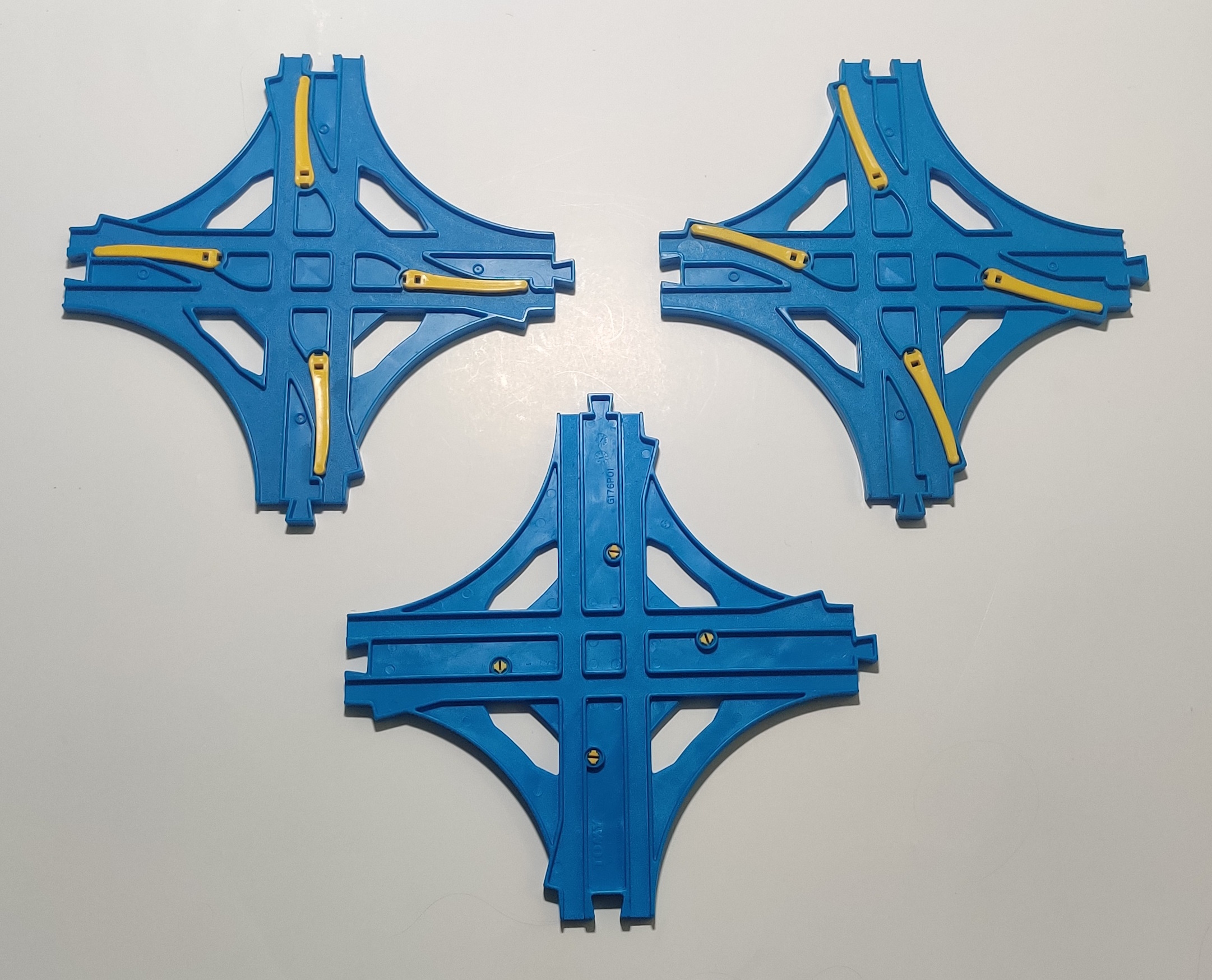
The Crossing Point Rail (交差ポイントレール) was first used in the odd 1977 CoroCoro Plarail set in a brownish color. The following year in 1978 it was released in regular Plarail blue in a hang-tag bag with four R-02 Half Straight Rails. The design of the crossing point rail allows for a train to head straight across like a traditional crossing or to switch off to one side and exit one of the adjacent exits instead of the opposite one. The directional point levers in the rail connect the opposite-connectored tracks, and the rail can be flipped upside down and the point portion of the point rail ignored entirely, with the half straight tracks making a figure eight layout very easy with the addition of 12 R-03 Curve Rails. This offers several different configurations of ways to use the crossing point rail.
The footprint of the crossing point rail is that of two standard R-01 Straight Rails on top of one another. With straight rails measuring around 215mm, the radius of the tight curves formed by the points is thusly around 107mm, forming a tight curve that fits in with the tight 90 degree curves used in CoroCoro Plarail and the Plarail Land series. The initial 1970s release was given the number 51 and in 1988 it was given the designation R-14 Crossing Point Rail (R-14 交差ポイントレール). The crossing point rail is still in print today.
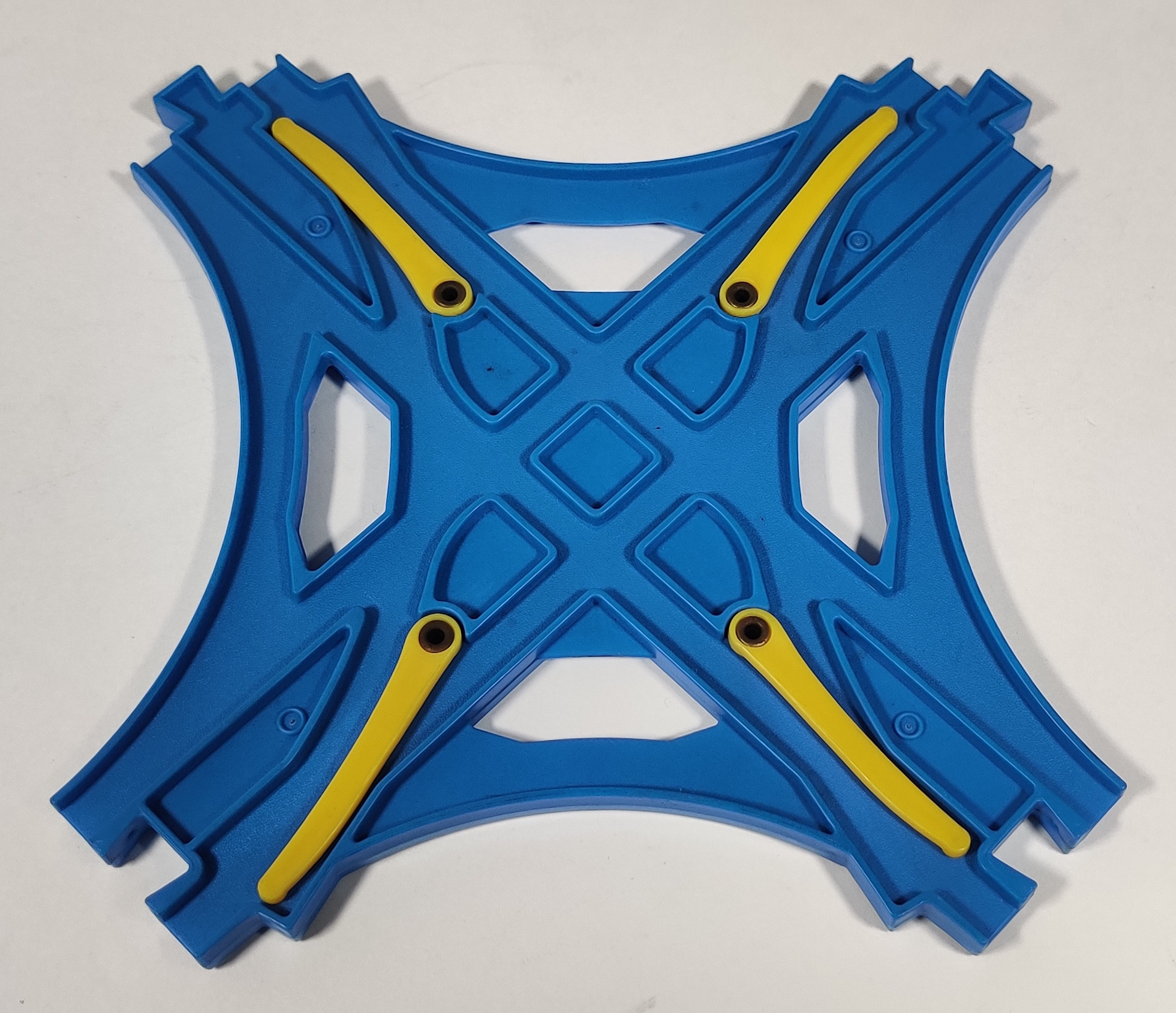
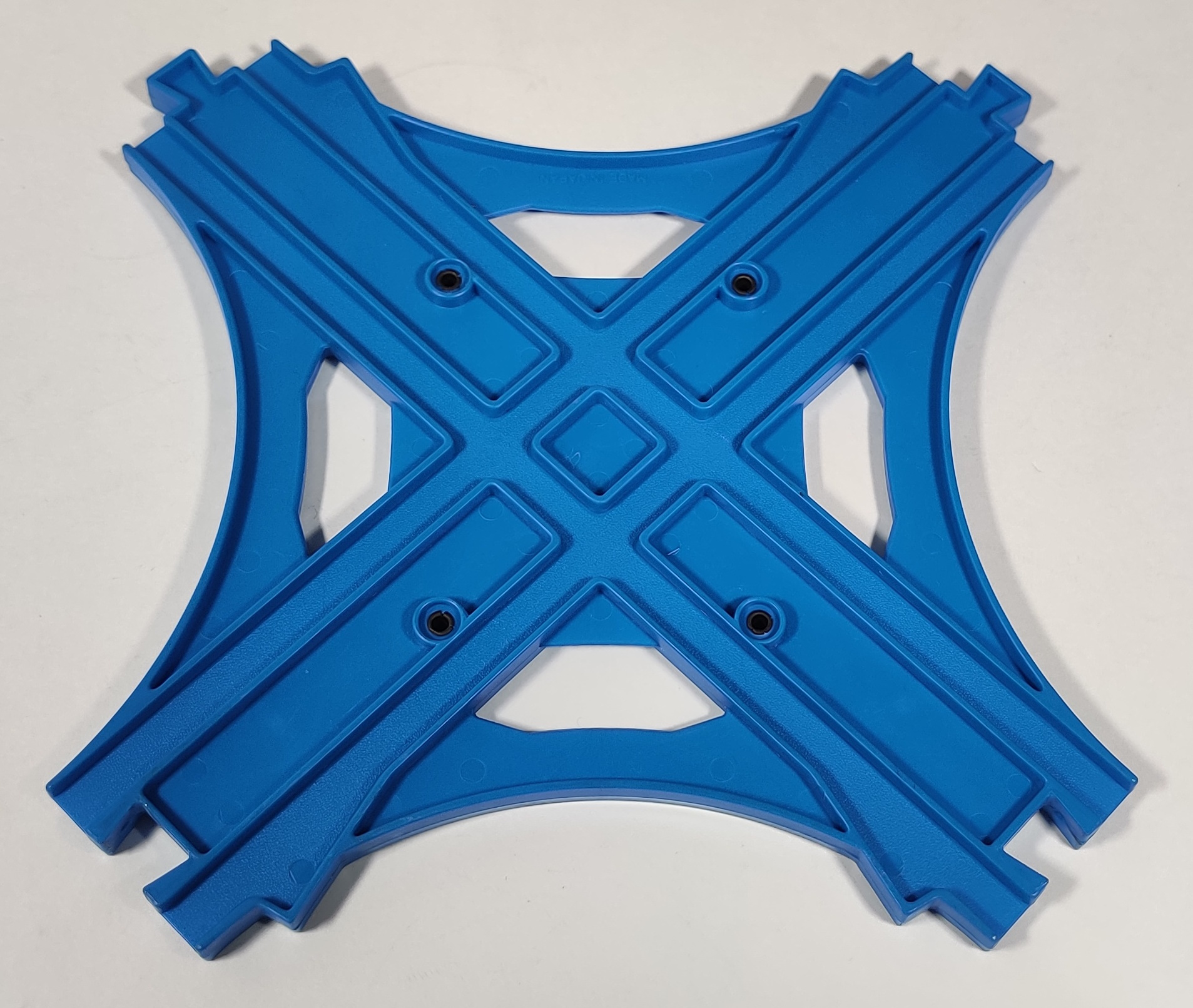
Early crossing point rails have metal pins holding the point deciders in place.
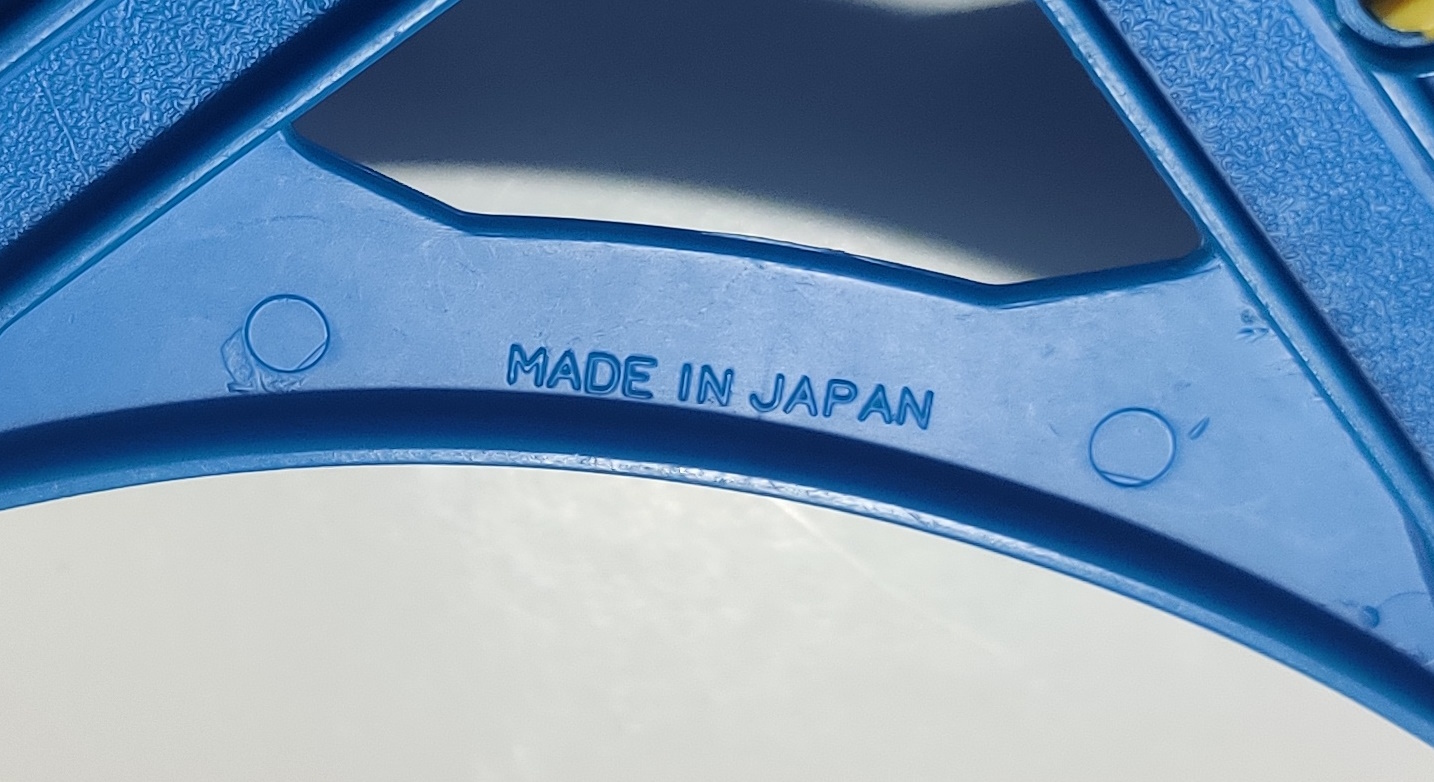
Early Japanese-made crossing point rails are marked Made in Japan under the arch forming the outer rim between the two convex connectors.
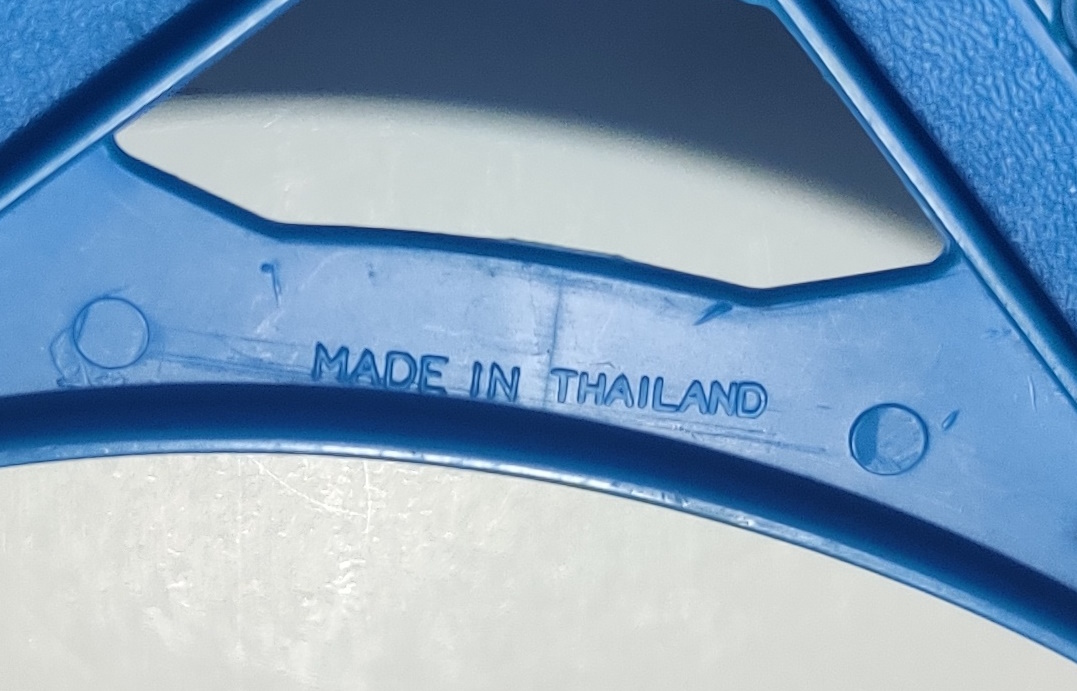
Unlike most other rail, the crossing point rail did not transition to a treaded surface in the late 1980s or early 1990s, perhaps because it was considered too hard to tread the criss-crossing surface and multiple directional levers.
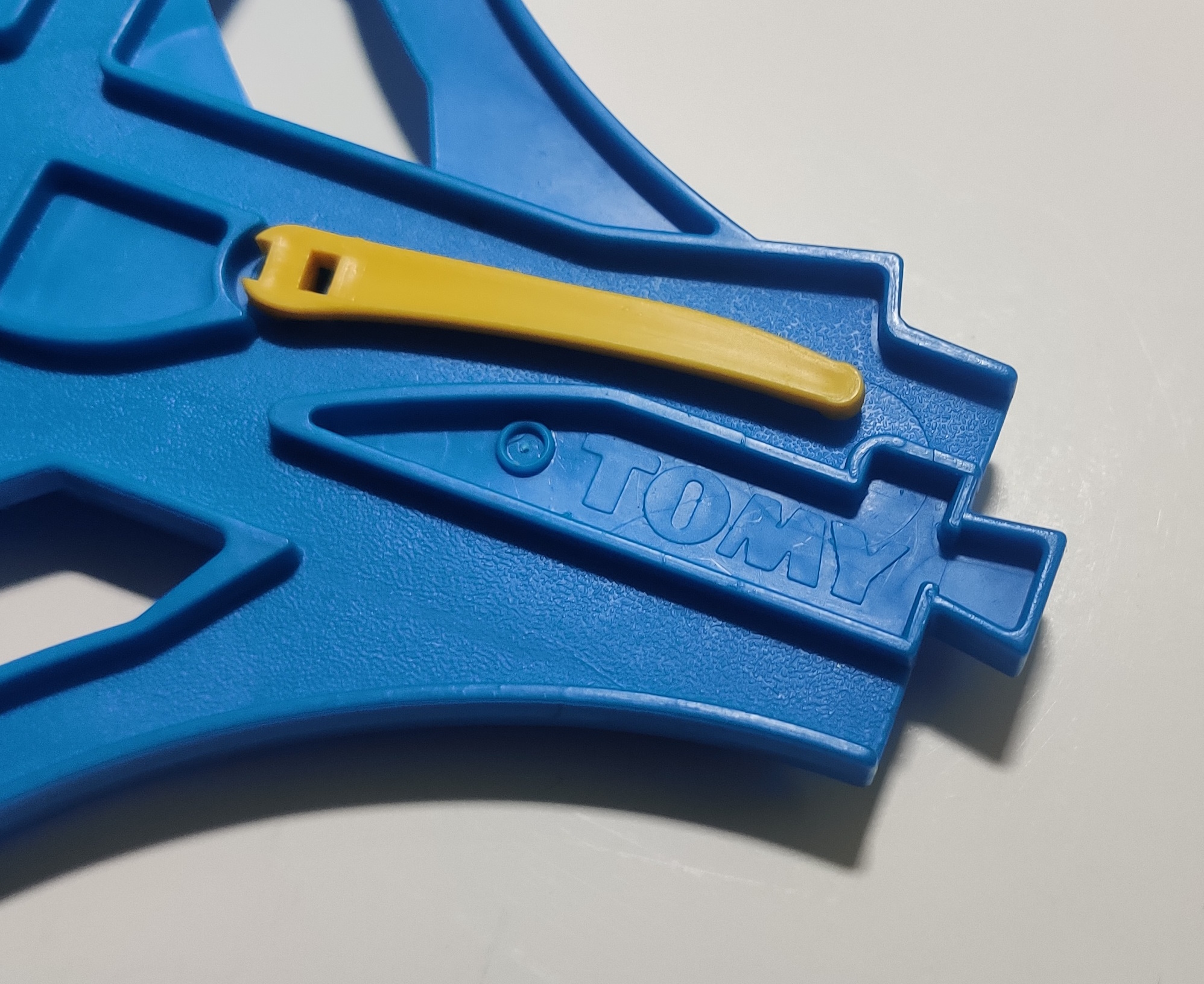
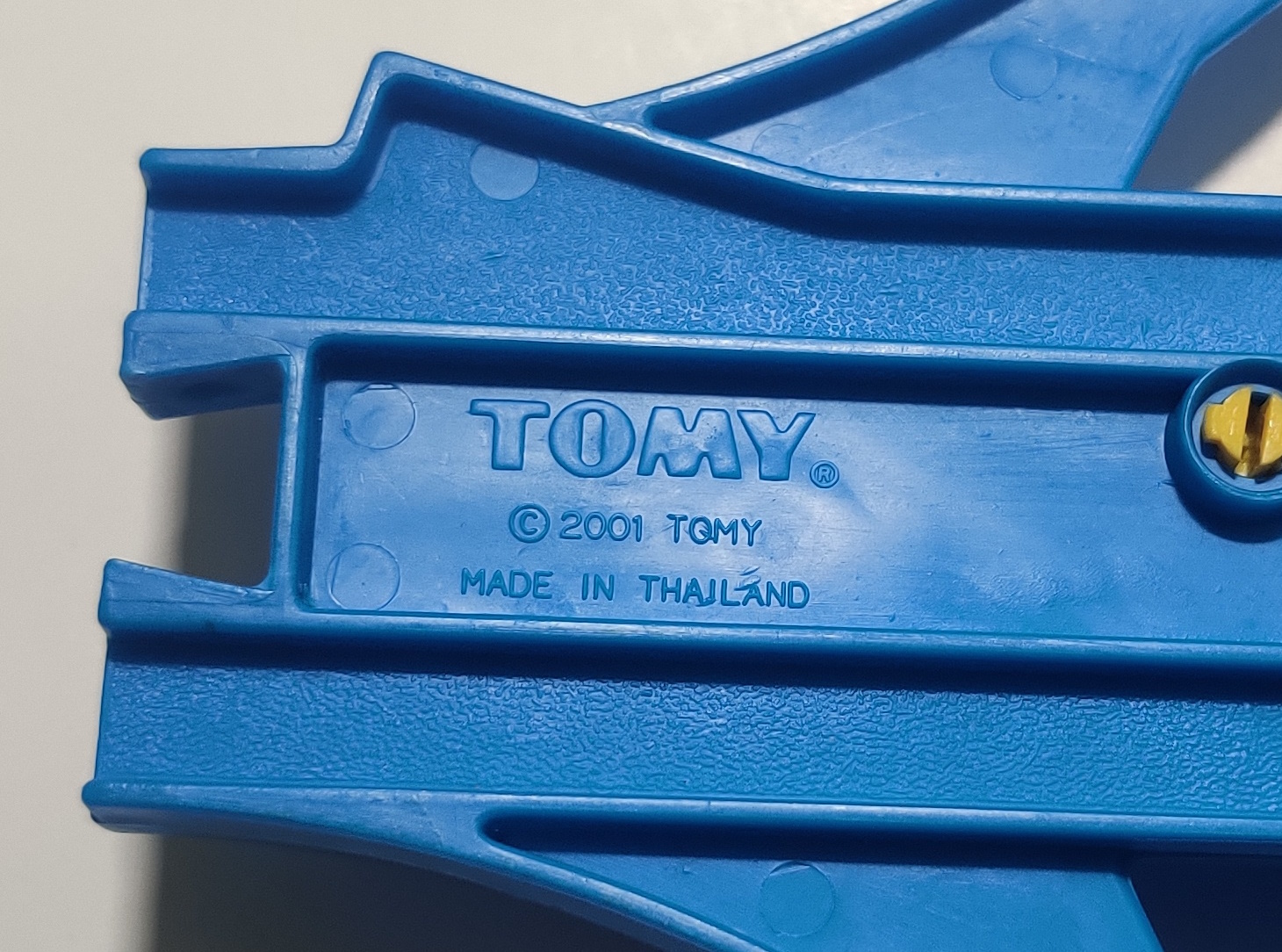
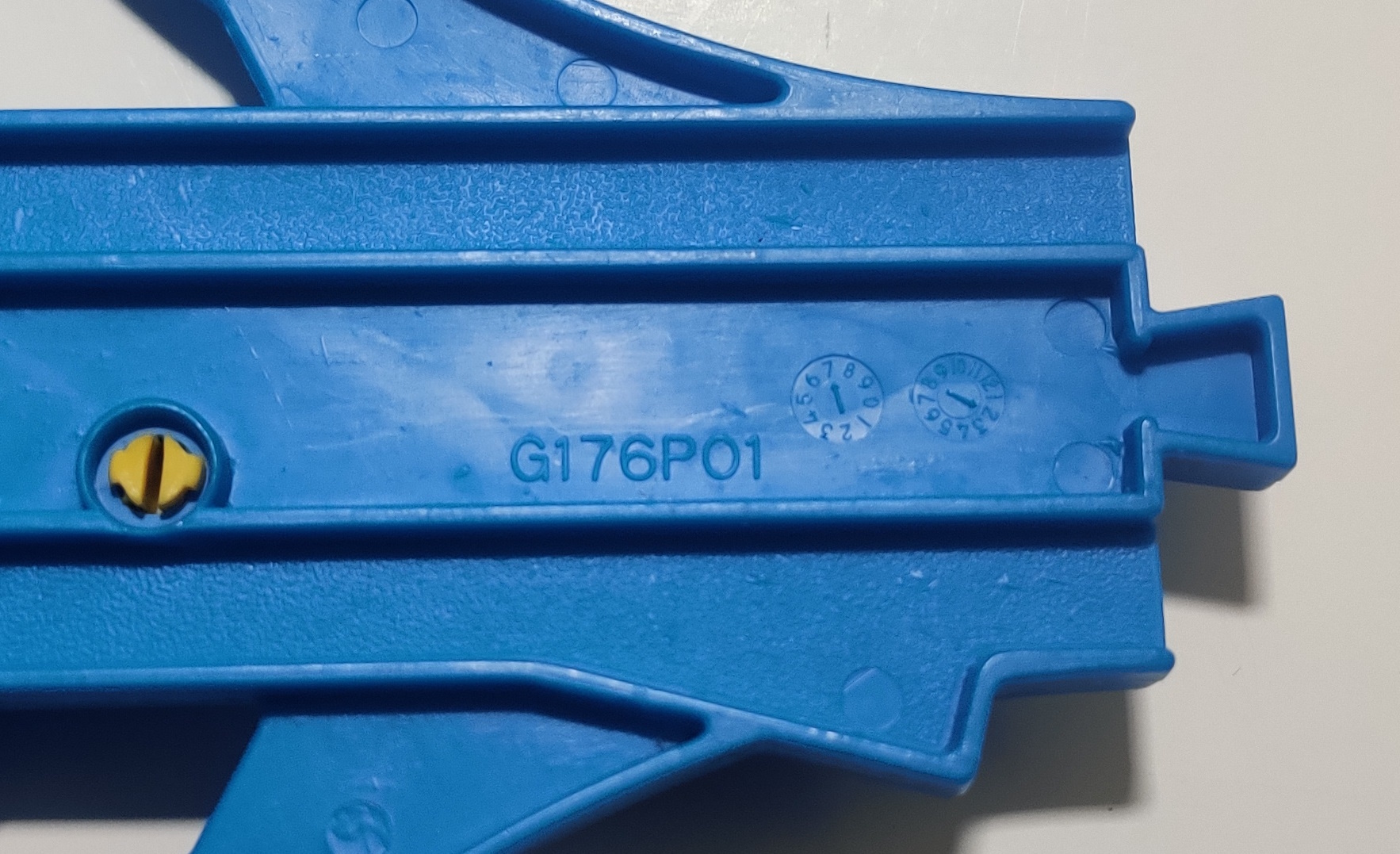
Even into the 2000s the crossing point rail remained roughtop treaded, even when updated with new logos and molding information in the early 2000s.
| <--R-13 Single/Double Point Rail | R-15 Double Track Point Rail --> |